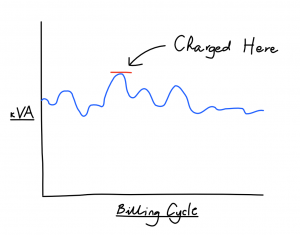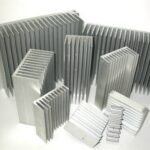What is flat demand tariff
Flat demand tariff this is one of the oldest tariff schemes of charging the consumption. In olden days, electricity application was very limited such as lighting i.e lamp loads. The time duration for which these lamps are to be used were fixed i.e no hours of use were fixed.

Billing cycle demand tariff
In this tariff scheme, the points considered while charging the consumer are,
- Total number of lamps installed
- Total connected load in KW
- Total time of use in hours
The time in hours may be over the duration of the month, a quarter year or a year. All consumer belonged to the same category as total energy demand and consumption was fixed.
“So the rate at which consumer was charged = particular amounts per lamp of installed load.”
Total Energy Charge = Rs.NL=*R
Where,
NL = Number of lamps
R = Rate per lamp
Applicability of this tariff is limited to street lighting, loads which are easily predictable.
Flat Demand Rate
The flat demand rate is expressed as follows :
Z= ax
- The bills depend only on the maximum demand irrespective of the amount of energy consumed.
- It is based on the customer s installation of energy consuming devices which is usually denoted by so many KW per month or per year.
- It is probably one of the early systems of charging energy rates. It was based upon the total number of lamps installed and a fixed number of hours of use per year. Hence the rate could be expressed as price per lamp or unit of installed capacity.
Nowadays the use of this tariff is restricted to signal systems, street-lighting e.t.c., where the numbers of hours are fixed and the energy consumption can be easily predicted. It is very common to supplies of irrigation tube wells since the number of hours for which the tube well feeders are switched on are fixed. The charges are made according to the horsepower of the motor installed.
In this form of tariff, the unit of energy cost decreases progressively with an increased energy usage since total cost remains constant By the use of this form of tariff the cost of the metering equipment and meter reading is eliminated and so the account cost is minimized.


